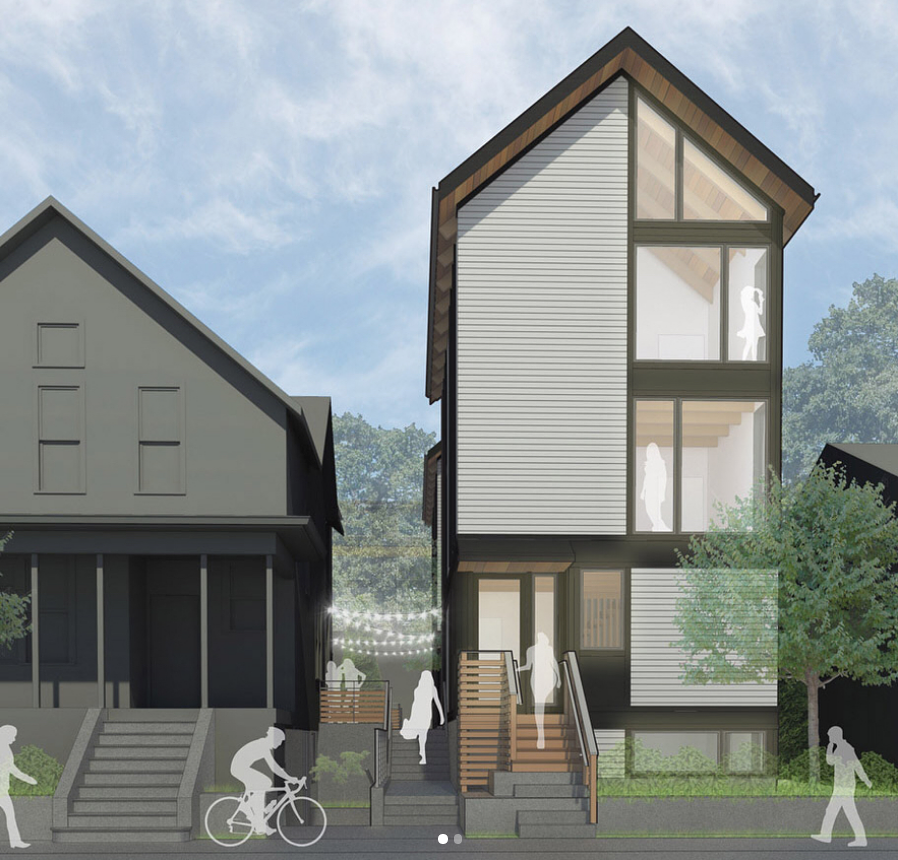When RareBird invited us to talk at their monthly Investor Network Meeting about community-focused development, we jumped at the opportunity. At Owen Gabbert LLC, we work carefully to consider the impact that every one of our projects will have on the people and spaces nearby; being conscious of community is a part of how we develop, no matter the size of the project.
We started off our discussion by introducing a concept that is integral to how we work: community-conscious infill. What exactly is it?
Community-conscious infill is composed of four elements:
It is…
- Intentional: we set the goal – of incorporating the existing or desired community – from the outset.
- Innovative: we must be able to visualize and handle the project constraints from new angles.
- Collaborative: we know partnerships make quality projects work, so we need to work together.
- Considerate: we have to consider our impact on the people and the space around us.
When we work in this manner, we’re able to add value to projects in unique and powerful ways. For example, we can increase density while maintaining neighborhood character like we did with the B3 project. Here, we added a third unit in the backyard of a Mississippi Duplex without demolishing an existing home and maximized underutilized space by reclaiming an overgrown backyard and engaging the alley.
On a much larger scale, we incorporated this way of thinking into One North, which was a collaboration between two development teams across three buildings. What’s more, this unique urban infill office and retail development space incorporates a large communal area (14,000-square-foot public courtyard) that creates a shared amenity for those who work, live, and play both in the building and in the nearby neighborhoods.
Moving forward, we’re excited to leverage communal spaces and shared resources on an even bigger scale in order to lower the per-unit cost and create a better living experience for everyone involved. This concept will come to life in the Michigan Coliving project, which incorporates an existing home into a brand-new coliving development. Overall, we believe this kind of offering is a great alternative to traditional studios and one-bedroom apartments for the neighborhood and the city as a whole, as it will offer attractive units at below-market rent rates while providing those who live there with a community space that is utilized to the fullest degree possible. Stay tuned on the OGLLC blog for more information about this upcoming project as we break ground in the coming month.


